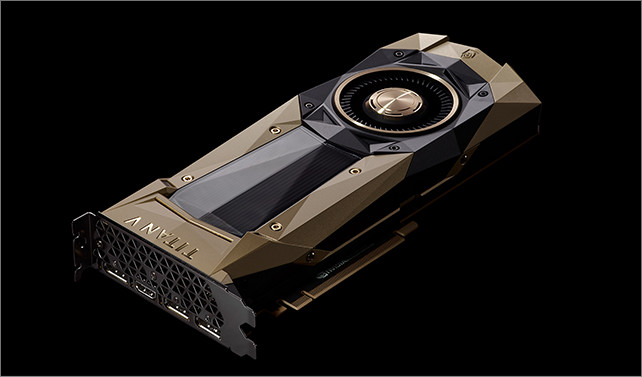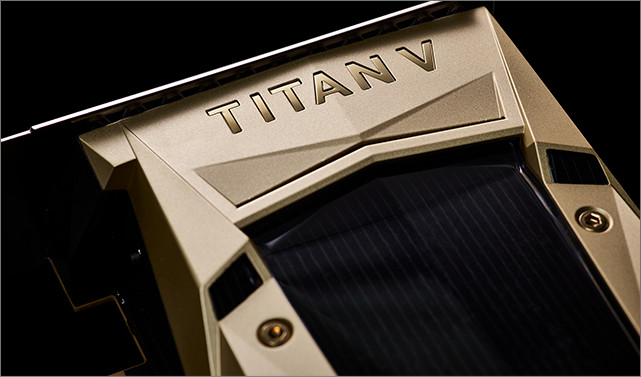Nvidia announces Titan V, a $3000 graphics card based on Volta
NVIDIA has
announced the Titan V, a prosumer graphics card based on the company's brand
new Volta architecture using 12nm process that supersedes the previous Pascal
architecture found on the Titan Xp. It's a $3000 graphics card that is designed
entirely with compute performance in mind for people working on AI, deep
learning, 3D rendering, and other computationally intensive applications.

At the heart of the Titan V is the GV100 GPU
that was first seen on the $10000 (yes, that's one with five zeroes) Tesla V100
back in May. For the most parts, the GPU is identical, with 21.1B transistors,
5120 CUDA cores and 640 Tensor Cores. The Tensor Cores enable certain specific
compute operations and is able to handle them much quickly and efficiently than
the standard CUDA cores. This, coupled with the 1200MHz core clock and 1455MHz
boost clock, results in single precision of 13.8 TFLOPS and double precision
performance of 6.9 TFLOPS, both just a shade under what the V100 can do. The
Titan V also boasts of 110 TFLOPS of Tensor performance, which is valuable for
deep learning operations.

Where NVIDIA has dialled back a little is in
the memory department. The Titan V has 12GB of HBM2 memory with 850MHz, 1.7Gbps
memory speed, 3072-bit wide memory bus width and 653GB/s memory bandwidth, all
very impressive numbers but not as impressive as the 16GB 4096-bit V100 memory
with 900GB/s bandwidth. The card has a TDP of 250W with one 6-pin and one 8-pin
connectors.
Externally, the card looks nearly identical to the previous Titan Xp, save for the fancy cold gold color. It has the same copper heatsink with vapor chamber design for cooling. On the back are three DisplayPorts and one HDMI.
It's worth reiterating that this card is
designed for compute applications. The price is high by consumer card standards
but is quite affordable when compared to other workstation class cards on the
market, such as NVIDIA's own Quadro and Tesla products. The Titan V is aimed at
getting into AI or machine learning stuff and brings most of the V100
performance at a fraction of the cost. Of course, it's still possible to game
on it and it will use NVIDIA's standard GeForce suite of drivers but the
performance likely won't be much better than last year's Titan Xp. But with
these new Tensor Cores, the Titan V will likely blow the Titan Xp out of the water
when it comes to compute applications.

The Titan V is available from NVIDIA's website
for $2999.
Source: gsmarena
Follow us on Twitter